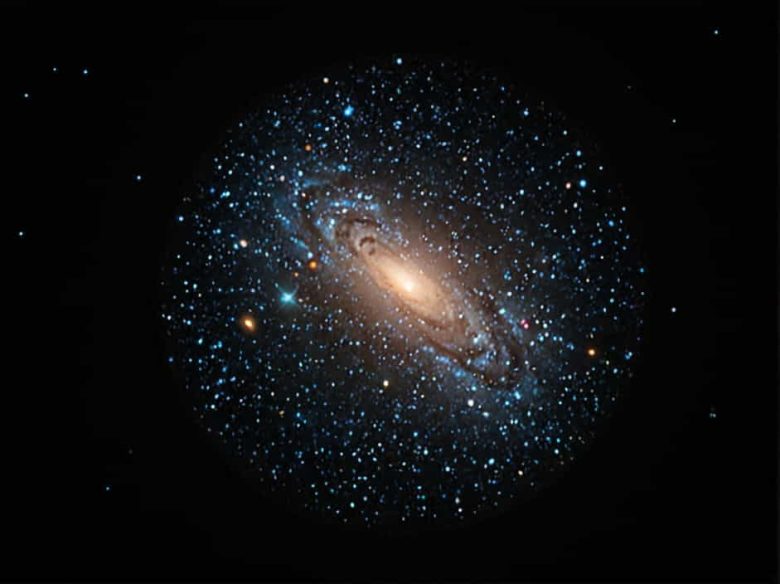The Milky Way is home to more than 150 known globular clusters, each containing hundreds of thousands of ancient stars. These dense, spherical collections of stars are some of the oldest structures in our galaxy. But where exactly are these globular clusters located? Understanding their distribution can help us uncover the history of the Milky Way and its formation.
What Are Globular Clusters?
Globular clusters are tightly bound groups of stars that orbit the center of a galaxy. Unlike open clusters, which contain younger stars and are often spread out, globular clusters are densely packed and contain old, metal-poor stars that formed billions of years ago. These clusters are held together by strong gravitational forces, making them highly stable over long periods.
Astronomers study globular clusters to learn about the early universe, as many of these stellar groupings are nearly as old as the Milky Way itself.
Where Are the Milky Way’s Globular Clusters Located?
Globular clusters in the Milky Way are not randomly distributed; instead, they are found in a distinct region of the galaxy. Unlike open clusters, which reside in the galactic disk, globular clusters are concentrated in the galactic halo and orbit around the galactic center.
1. The Galactic Halo
The galactic halo is a vast, spherical region surrounding the Milky Way. It extends far beyond the visible disk of the galaxy and contains most of the Milky Way’s globular clusters. This means that when we observe globular clusters, we are looking at structures that orbit outside the main plane of the galaxy.
- The Milky Way’s halo extends up to 300,000 light-years from the galactic center.
- Most globular clusters are located between 10,000 and 100,000 light-years from the center.
- Some, like NGC 2419, are over 275,000 light-years away—almost as far as the Local Group’s dwarf galaxies.
2. The Galactic Bulge
Although most globular clusters are found in the halo, some are also located in the galactic bulge—the dense, central region of the Milky Way. These clusters are closer to the core and often have a slightly different chemical composition compared to those in the halo.
- Examples of globular clusters near the galactic center include Terzan 5 and M62.
- These clusters are thought to have formed early in the galaxy’s history, possibly from the same material that built the bulge.
3. The Outer Regions and Halo Substructures
Some globular clusters are found in extended regions beyond the main halo. These outer globular clusters may have originated from dwarf galaxies that merged with the Milky Way over time.
- The Sagittarius Dwarf Galaxy, currently merging with the Milky Way, has contributed globular clusters like M54 to our galaxy.
- Other clusters, such as Palomar 14, are located in the extreme outskirts of the halo.
How Do Globular Clusters Orbit the Milky Way?
Unlike stars in the galactic disk, which follow circular orbits, globular clusters often move in elliptical orbits around the galactic center. These orbits can take millions of years to complete and are influenced by the Milky Way’s gravitational field.
- Some clusters have highly eccentric orbits, meaning they travel close to the core before swinging far into the halo.
- Others have retrograde orbits, meaning they move in the opposite direction of the galaxy’s rotation—evidence that they may have been captured from other galaxies.
Why Are Globular Clusters Found in the Halo?
The reason globular clusters are concentrated in the halo rather than the disk lies in their age and formation history.
- Globular clusters formed early in the Milky Way’s evolution, before the galactic disk was fully developed.
- The oldest globular clusters are over 12 billion years old, dating back to the early universe.
- Their location in the halo suggests they are some of the first structures to have formed as the Milky Way took shape.
Over time, the gravitational pull of the galaxy has influenced their distribution, but because they are so tightly bound, they have remained largely intact.
Famous Globular Clusters in the Milky Way
Some of the most well-known globular clusters include:
1. Omega Centauri (NGC 5139)
- The largest and brightest globular cluster in the Milky Way.
- Contains millions of stars, much more than a typical globular cluster.
- May have been the core of a former dwarf galaxy that merged with the Milky Way.
2. M13 (The Great Hercules Cluster)
- One of the best-known northern hemisphere clusters.
- Located about 22,000 light-years away.
- Contains around 300,000 stars.
3. M15 (Messier 15)
- One of the densest globular clusters, with a collapsed core.
- Contains a high concentration of neutron stars and possibly a black hole at its center.
4. M54
- Once thought to be a normal Milky Way cluster, but later discovered to belong to the Sagittarius Dwarf Galaxy.
- Provides evidence of how the Milky Way has absorbed smaller galaxies over time.
The Role of Globular Clusters in Galactic Evolution
Globular clusters are crucial for understanding the formation and evolution of galaxies. Because they contain some of the oldest stars in the universe, studying them helps astronomers:
- Determine the age of the Milky Way by analyzing the age of cluster stars.
- Understand chemical evolution, as older clusters contain fewer heavy elements compared to younger stars in the disk.
- Trace the Milky Way’s merger history, since some clusters were originally part of other galaxies before being captured.
Future Studies on the Milky Way’s Globular Clusters
With advancements in telescope technology, astronomers continue to discover new details about globular clusters. Observations from the Hubble Space Telescope, Gaia mission, and James Webb Space Telescope are providing deeper insights into their structure, motion, and origin.
Some exciting future research areas include:
- Searching for black holes inside globular clusters.
- Studying exoplanets in globular clusters to understand planet formation in dense environments.
- Mapping the motion of clusters to learn more about the dark matter distribution in the Milky Way.
The Milky Way’s globular clusters are primarily located in the galactic halo, orbiting far from the central disk. These ancient star clusters provide valuable clues about the formation of our galaxy and the early universe. By studying their locations, orbits, and compositions, astronomers can piece together the complex history of the Milky Way, revealing how it grew and evolved over billions of years.



